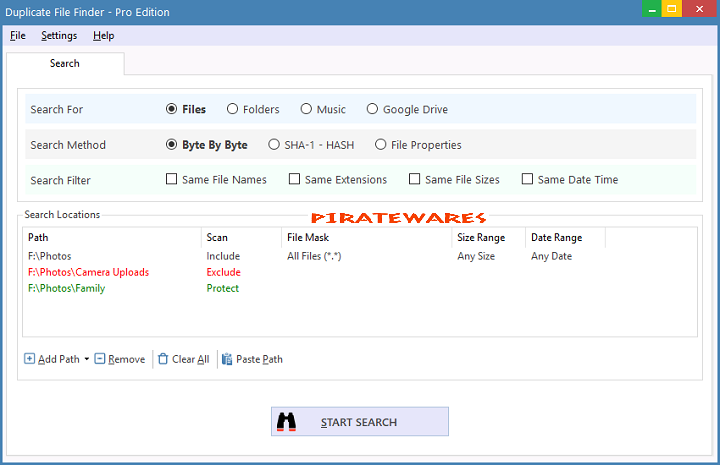

The plug-in can use ExifTool to access sub-second data (if it was recorded by the camera) however the process is slow, so if you don’t frequently shoot in burst mode, it’s usually quicker to exclude these manually later. Lightroom only stores capture times to the nearest second, so photos shot in burst mode may be marked as duplicates.To save time sorting through the duplicates, you can run multiple passes of the plug-in, initially using very strict criteria to find and delete photos that are almost certainly duplicates, and gradually expanding the criteria to find other possible duplicates.These determine how identical photos must be in order to be recognised as duplicates. On the Rules tab, you can decide which metadata is used to identify duplicates.If you use color labels in your own workflow, go to the Marks tab and uncheck Abuse color labels for sorting so that the plug-in doesn’t change your color labels.If you use reject flags in your own workflow, and you decided not to delete the rejects from the hard drive, go to the Marks tab and uncheck Mark duplicates as rejected and Reset rejected flag to prevent the plug-in overriding your reject flags.On the Marks tab, you decide how the suspected duplicates are recorded in the catalog:.The default settings shown on the Summary tab are pretty good, but you can save some work by fine-tuning the settings for your own needs. I’ll leave you to read the documentation, but these are a few settings to look out for:


DUPLICATE PHOTO FIXER CANT SELECT PHOTOS ZIP FILE
Download the latest ZIP file and double-click to access the plug-in inside.Fortunately, there are a couple of plug-ins that can help you identify the duplicates – Duplicate Finder (£9.95 GBP/$13.99 USD approx.) and Teekesselchen (open source donationware).īoth plug-ins come with documentation, but to get an overview of how the plug-ins work and learn a few of the pitfalls and tricks, we’ll take Teekesselchen for a test run. You could scroll through the photos in Capture Time order, manually looking for each duplicate photo, but if you have more than a few thousand photos, this could take a LONG time. Whatever the cause, it’s time to clean up… Merging catalogs can introduce duplicates, but so can importing photos with Don’t import suspected duplicates unchecked, importing exported photos or using the catalog on more than one device can also clutter your catalog with duplicate photos. Over time, you may have ended up with a load of duplicated photos that you need to clean up.


 0 kommentar(er)
0 kommentar(er)
